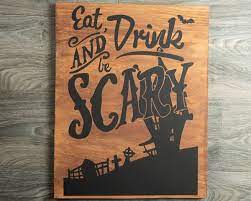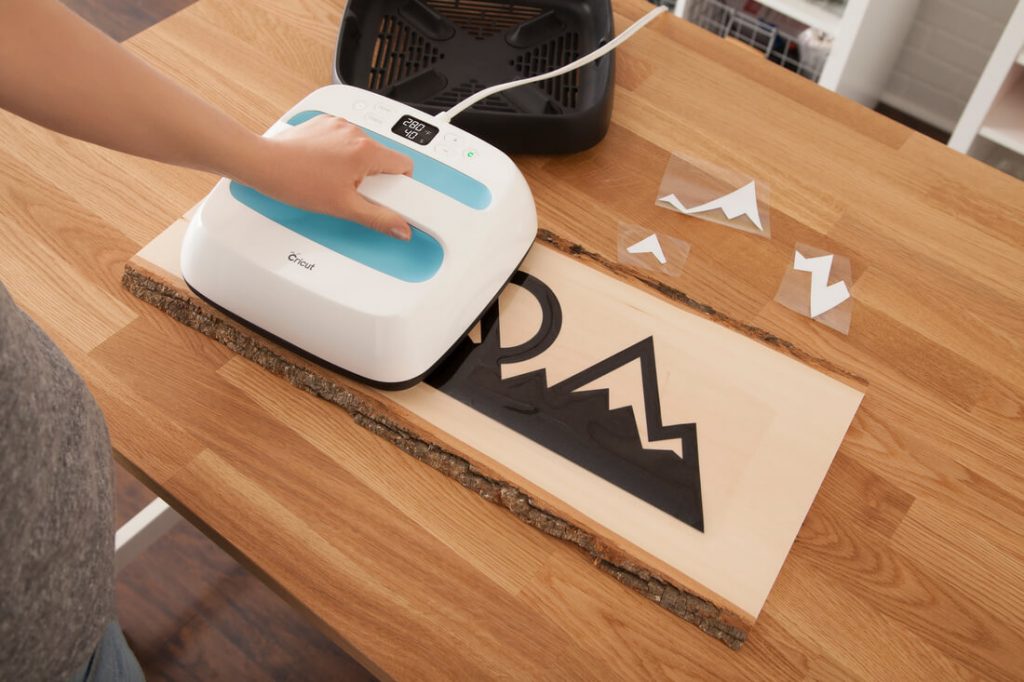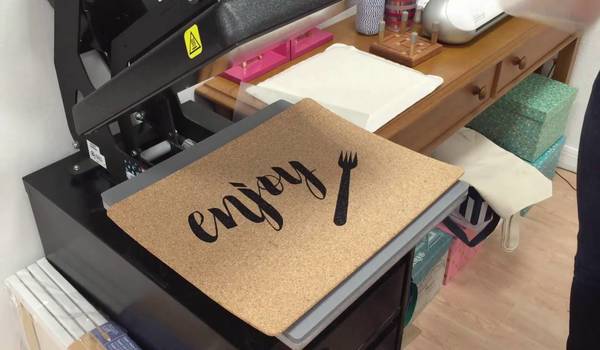Can you heat press on wood? When and How to?
Printing on wood is becoming increasingly popular with the constant increase in demand for customized wood furniture, picture frames, and cups. There are many benefits for printing on wood, including the natural look, flexibility, and durability.
Wood is a good material for heat press printing because it absorbs heat better than most other materials.
Can you heat press on wood?
Yes, we can heat press on wood. Wood is a natural material that can be heated up with heat presses to create various products. The heat press transfers heat into the wood, while pressure pushes it through to create new shapes and patterns. Many people also use wood for decorative purposes.
How to heat press on wood?
1. Make sure the wood you are using is dried.
2. If there are any gaps in the wood, fill them with a wood filler or adhesive.
3. Apply the ink in the desired pattern to the wood.
4. Place the wood in the center of the heat press machine and put it on medium heat for 30 minutes.
5. Remove from heat press machine and allow to cool before handling.

Pros
- It is eco-friendly.
- You can use any wood, and it will still look and feel like a high-quality product.
- Heat press printing on wood is easy and quick.
- The heat pressed timber can be used in various ways, such as s a customized desk, coffee table, picture frame, and more.
Cons
- Wood can warp and shrink with heat and not recover
- Heat and moisture can cause wood to rot
- The wood will always be at risk of cracking or splintering
- Wood is an expensive material
- A wooden heat press is a bit more expensive
- Heat press printing on wood can cause warping or cracking
Heat Press Printing on wood Tips
- It is best to heat press on plywood or cork.
- Heat press printing is not recommended on composite boards.
- Use a heat press with a 1.2mm nozzle
- Use a non-solvent-based wood glue that doesn’t contain formaldehyde, ammonia, or other toxic chemicals.
- Only use a limited amount of glue on the surface of the wood.
- Use a spritzing bottle to coat the entire surface of the wood with water before applying the glue.
Uses of heat press printing on wood
The process of using a heat press to print on wood is one of the few methods that allow for natural wood printing, as opposed to using vinyl or other materials that would otherwise cause damage to the wood. However, you will need a good heat press with attachments.
Heat presses apply pressure to the wood to create a raised image. This process is used to create textured wood designs, such as raised initials or logos.
Heat press printing on wood/wood veneer is used for both decorative and functional purposes.
Our Review of PowerPress machine

FAQs
What temperature should I heat press wood?
The recommended temperature to heat press wood with a press is 240-300 degrees Fahrenheit.
Does Cricut vinyl stick to wood?
YES! You can use Cricut vinyl on stained wood – but it’s not always the best idea. A disadvantage of using this adhesive is that it can cause stains to leave a greasy residue on your materials, often resulting in your vinyl peeling off. The solution is relatively straightforward: use a sealant like Polycrylic and let it dry for 24 hours before proceeding to the next step.
Can you use infusible ink on wood?
The answer is no because the ink would not be evenly distributed and would cause an uneven finish.
How do you heat press pictures on wood?
Heat pressing woodworks are the same as heat pressing photographs on other materials. To heat-press, a picture on the wood first coats the entire surface of the wood with a picture paste. Heat press the top half of the image on the paste. The paste will react with the heat and turn a darker green color as a result. You can trim off the excess paste and peel it back to reveal a dark green image when a green finish is achieved.
How do I get the vinyl to stick to wood?
Vinyl adheres to surfaces by the application of heat and pressure. If you’re trying to stick vinyl to a surface like wood, you can use a hairdryer on low heat. Alternatively, you can wrap the vinyl around a rubber ball, then press it into the vinyl to create a sticky surface.
How do you seal vinyl to wood?
Vinyl can be sealed to wood with a sealer or by using wood glue.
Why is my vinyl not sticking to wood?
This can happen if you apply too much or too little pressure on the vinyl. The vinyl will also not stick to wood if the surface is not clean, smooth, and dry.
Do you need to seal HTV on wood?
Does Cricut vinyl stick to wood?
YES! You can use Cricut vinyl on stained wood – but it’s not always the best idea. A disadvantage of using this adhesive is that it can cause stains to leave a greasy residue on your materials, often resulting in your vinyl peeling off. The solution is relatively straightforward: use a sealant like Polycrylic and let it dry for 24 hours before proceeding to the next step.
Additional Questions
How can you use a heat press on wood?
Heat pressing on wood is definitely feasible and it’s a wonderful method to add a permanent, custom design to your wooden pieces. Based on instructions from the Cricut website, when using a material like Everyday Iron On with wood, you should start by **setting your heat press to 300° F**. It’s important to then preheat the wood surface for around 5 seconds. This is a key preliminary step to ensure that the wood is ready to receive the heat transfer. Lastly, apply firm pressure and press for about 40 seconds. This set timing aids in embedding the design well into the wood, creating a lasting effect. Remember, for best results, always refer to the instructions that came with your specific heat press and the material you are using.
Is it possible to heat press something onto wood?
Yes, unquestionably. Heat pressing onto wood is a popular technique among crafters and hobbyists. It allows you to add a unique touch to your wooden items, such as signs, decors, and even furniture. Similar to heat pressing on fabric, the process involves applying an image, pattern, or design to the wood using heat. The key, however, is making sure the temperature is set appropriately – for instance, **the recommended temperature is 300°F if you’re using Everyday Iron On**. Always keep an eye on the heat press during the process to avoid any mishaps. Trust me from experience, once you get the hang of it, you’ll be heat pressing all your wooden pieces!
What is the correct temperature to heat press on wood?
When heat pressing on wood, the right temperature is crucial. This can vary slightly depending on different factors such as the type of wood and the material you’re using for the design. However, a good rule of thumb, and one that is suggested by the experts at Cricut, the temperature should be set around **300°F for using Everyday Iron On**. But let me stress again, it’s always useful to refer to the guidelines specific to your heat press and heat transfer material. Some trial and error might be needed to find the perfect settings for your particular project. I remember when I first started, it took me a bit to get the settings right. But with patience, you’ll have it down in no time!
Is it okay to use my Cricut heat press on wood?
Absolutely, you can use your Cricut heat press on wood. It’s an outstanding tool for this purpose. I’ve been using mine for a variety of heat transfer projects on wood and it works like a charm. Following the Cricut guidelines, make sure to **set the temperature to 300° F, preheat the surface, and press with firm pressure for 40 seconds**. This should ensure a successful transfer onto the wood. But remember, always carry out your heat pressing projects in a safe environment, away from flammable materials. Happy crafting!

I’ve been in the printing business for 25 years. I love to share my experiences and knowledge.


